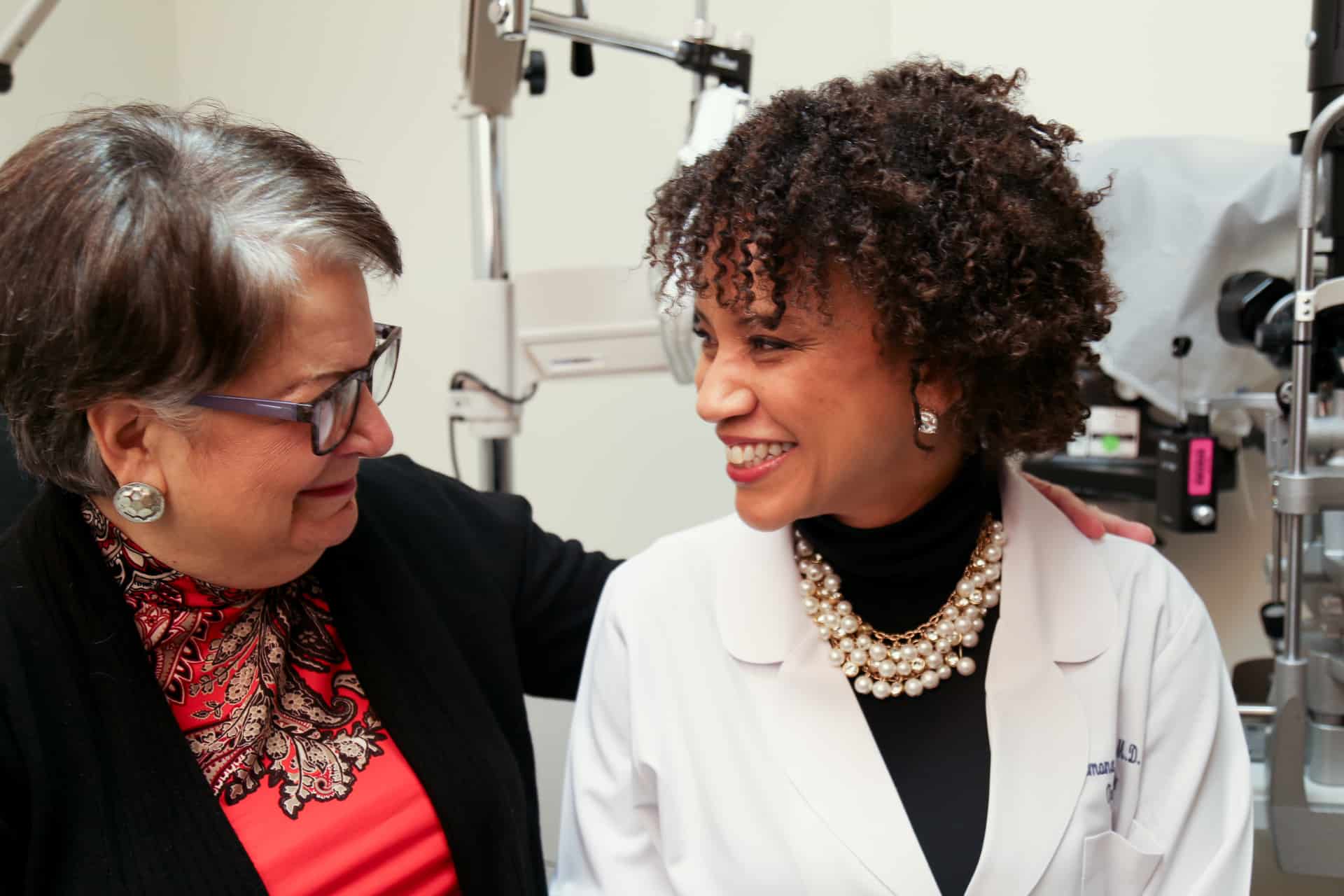Cataract Surgery Brings Color Back for Little Rock Artist
| April 11, 2017 | There are many things graphic artist and retired art teacher Jodi Shull loves about art, but she loves the vibrant colors most.
“I love being able to manipulate them in many ways,” she said.
Shull, 65, has made art a lifetime passion and career. She previously owned a studio in downtown Little Rock and spent 14 years as an art teacher at Little Rock Catholic High School.
Art is a part of her everyday life; however, it became a much smaller piece of her life when she began having trouble with her vision.
“Nothing was sharp,” said Shull. “It was as if every color had gray poured into it. The colors were muted.”
She stopped working with watercolors, unable to gauge how the colors interacted on the canvas.
As the effects of her deteriorating vision started to permeate other aspects of her daily life — Shull quit driving at night due to the glare from headlights and street lights — she sought help from Romona Davis, M.D., an ophthalmologist in the UAMS Harvey & Bernice Jones Eye Institute and an associate professor in the UAMS College of Medicine.

Shull, a retired art teacher, said her cataract procedure has energized her, allowing her to complete various art projects for family and friends.
Davis discovered Shull had a cataract in her right eye.
“When the natural lens in the eye becomes cloudy we call it a cataract. Vision becomes blurred, often causing difficulty with night vision, or like Jodi, color perception,” said Davis. “It’s a condition we see commonly in patients over 65.”
Davis removed the cataract in December, and the improvement for Shull has been phenomenal ever since.
“By that evening, I could tell a huge difference in brightness,” said Shull. “I have paintings all around my home, and that night I could see the colors again.”
The procedure energized Shull, who completed 12 projects within a week of the surgery.
“That was probably one of the best months of my life,” said Shull. “I was able to do art and what I wanted to do again.”
One of those projects was a gift for Davis. At her next follow-up appointment, Shull gave her a painting she’d completed of how her eyes registered light during the surgical procedure.
“While manipulating the cataract during surgery, the patient may perceive changes in colors and shapes. They usually describe the colors as very pleasant. Jodi was able to articulate what she saw in more detail,” said Davis. “The painting, entitled ‘Cataract Surgery…What the patient sees,’ was one of the best gifts I’ve ever received.”
Looking back, Shull is extremely happy she sought help from Davis and addressed her cataract.
“You don’t realize it because it’s such a slow and gradual change,” said Shull. “I’m glad Dr. Davis was able to help me.”
